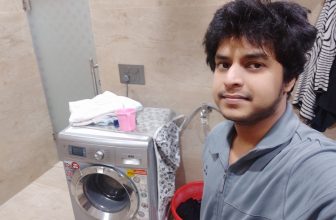A Comprehensive Guide to Installing Your Washing Machine
Installing a washing machine is a task that requires precision and attention to detail. This guide will provide you with a more detailed understanding of the process, including measurements, formulas, and calculations.
Table of Contents
Step 1: Select the Right Spot
The first step in installing your washing machine is to select the appropriate location. The spot should be near both water and electrical connections. Additionally, ensure that the floor is properly leveled.
Measurement: The washing machine should be placed within 1 meter of both water and electrical connections.
Calculation: Use a level to check the floor. If the bubble is centered, the floor is level. If not, you may need to use shims to level the machine.
Step 2: Removing Transit Bolts
Transit bolts are used to secure the drum of the washing machine during transportation.
Measurement: The transit bolts are typically M8 or M10 bolts, which refer to their diameter.
Calculation: Use a spanner that matches the size of the bolts to remove them.
Step 3: Levelling the Machine
Once the transit bolts are removed, the next step is to level the machine.
Measurement: Use a spirit level to ensure the machine is level.
Calculation: If the machine is not level, adjust the feet by turning them clockwise to raise the machine or counterclockwise to lower it.
Step 4: Connecting to Water Supply
The washing machine needs to be connected to a water supply.
Measurement: The inlet pipe of the machine has a collar with an internal thread. The supply point should have an external thread/male thread and should be available within one meter of the machine’s location.
Calculation: The water pressure should be between 0.05 MPa and 0.8 MPa. You can calculate this by timing how long it takes to fill a bucket of a known volume and using the formula P = ρgh, where ρ is the density of water, g is the acceleration due to gravity, and h is the height of the water column.
Step 5: Connecting the Drain Hose
The washing machine drains water via a pump.
Measurement: The end of the drain hose can be directed into a sink or basin. Alternatively, it can be placed directly on the floor. The maximum height should be one meter from the floor.
Calculation: The drain hose should be positioned so that the end of the hose is higher than the water level in the machine. This prevents water from flowing back into the machine.
Step 6: Electrical Connection
Finally, the washing machine needs to be connected to an electrical supply.
Measurement: It is mandatory to have a 16 Amps, 3 pin socket with a circuit protection device within one meter of the machine.
Calculation: The power consumption of the washing machine can be calculated using the formula P = IV, where I is the current (16 Amps) and V is the voltage (typically 220-240V in India).
By following these steps and safety guidelines, you can ensure that your washing machine is installed correctly and ready for use. Happy washing!
This content is collaboratively crafted and vetted by Shubham, a Mechanical Engineering specialist. His passion for unraveling the intricacies of machinery and consumer electronics mirrors his avid interest in gaming. With his wealth of expertise, Shubham adeptly navigates readers through the complexities of audio, home appliances, and everyday products, guaranteeing a smooth and enjoyable shopping journey. For every product you read about on this site we do rigorous research and testing behind the scenes to bring you the best value for money options. For any query directly reach out to me at my personal Instagram - https://www.instagram.com/shubhamgarg8024/





